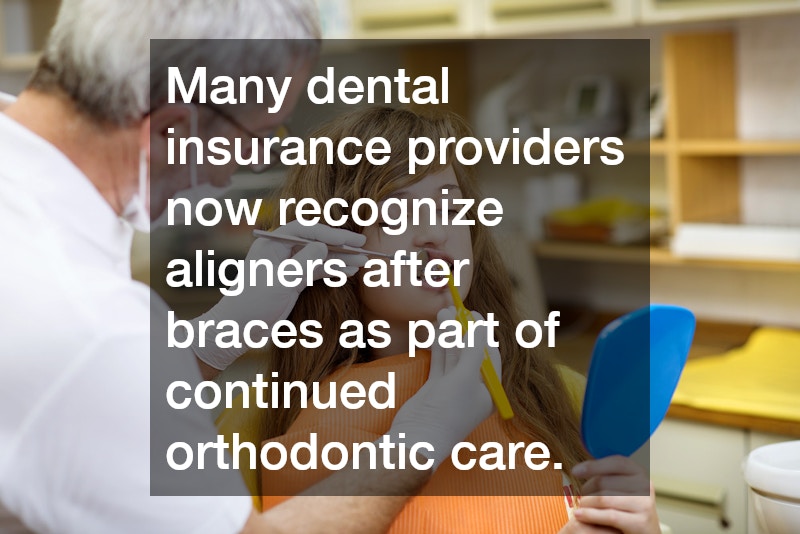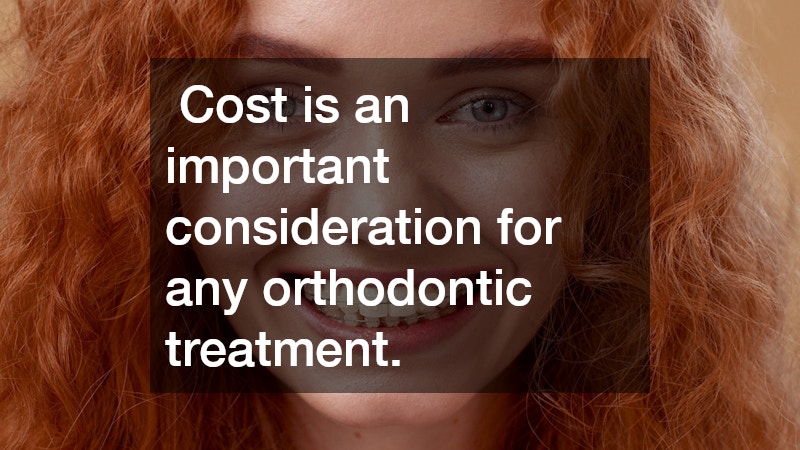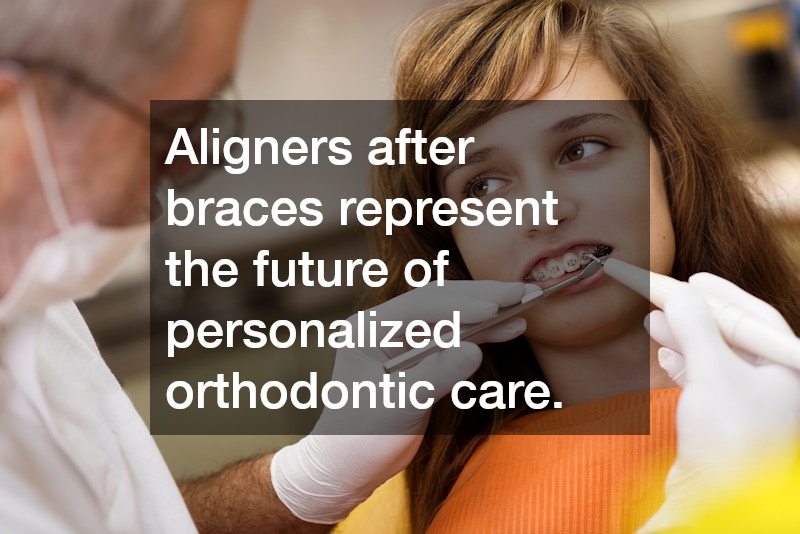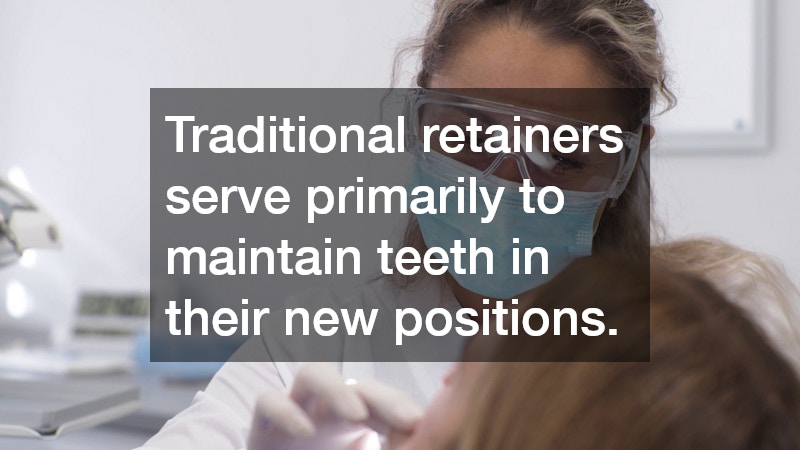Advancements in orthodontic care have opened the door to remarkable improvements in dental health and aesthetics. Many people who complete traditional braces treatment discover that the journey to a perfect smile doesn’t end when the brackets come off. For some, subtle shifting can occur over time, while others want to fine-tune alignment for even better results. This is where aligners after braces come into play—a modern solution that combines comfort, discretion, and precision to ensure long-term smile stability.
These aligners are custom-made to fit each patient’s teeth perfectly, allowing for incremental adjustments that maintain and enhance the results achieved through braces. Unlike fixed retainers, they offer flexibility and ease of use, making them an appealing option for teens, adults, and patients with active lifestyles. Local orthodontists often integrate these solutions into comprehensive orthodontic care plans, working closely with trusted dentists, health solutions partners, and other dental professionals to ensure a seamless transition from braces to aligners.
Additionally, collaborations with childcare services, local preschools, and community programs allow families to access preventive guidance and maintain oral health from an early age, reinforcing the importance of lifelong dental care. By leveraging advanced digital scanning, precise treatment planning, and continuous monitoring, patients can achieve a smile that not only looks stunning but is also structurally sound. Aligners After Braces exemplify how modern orthodontic care is both personalized and proactive, addressing subtle shifts before they become major concerns. With this approach, completing braces is no longer the endpoint—it’s the beginning of a well-supported journey toward a truly lasting smile.
1. Why Consider Aligners After Braces?
After months or even years of traditional braces, it’s natural to assume that your orthodontic treatment is complete. However, aligners after braces serve as a powerful continuation tool that refines your smile and maintains the alignment achieved through braces. Let’s explore why they’re becoming an essential step in modern orthodontic care.
1.1 Benefits of Aligners Post-Braces
The greatest advantage of using aligners after braces lies in their ability to maintain and enhance results without compromising comfort. Clear aligners are nearly invisible, easy to remove, and custom-fitted to your teeth. Unlike traditional retainers, they can make small, targeted adjustments to prevent relapse and improve alignment further.
Aligners also fit seamlessly into your daily routine. You can remove them to eat, brush, or floss, ensuring your oral hygiene remains consistent. For patients who have spent years with braces, this flexibility is both liberating and empowering.
1.2 Addressing Relapse Concerns
One of the main reasons people turn to aligners after braces is to address minor orthodontic relapses. Teeth naturally tend to shift over time, especially without consistent retainer use. Aligners gently correct these shifts before they become major concerns. By collaborating with your local orthodontist or local dentist, you can ensure your post-treatment plan keeps your smile in ideal alignment.
This stage of treatment is often coordinated with professionals in dental construction, who design appliances and structures that perfectly match your dental anatomy, ensuring durability and precision.
1.3 Maintaining Long-Term Results
Sustaining a well-aligned smile requires ongoing care and attention. Aligners serve as both a preventive and corrective solution, ensuring that your teeth remain in position for years to come. Many dentists recommend regular check-ups combined with personalized aligner schedules to prevent regression.
Furthermore, as part of holistic oral wellness, aligners can be included in partnerships between your orthodontist and a health solutions partner who supports overall patient wellness—integrating oral health into a comprehensive care plan.
2. How Do Aligners Work After Braces?

Understanding how aligners after braces function helps patients make informed decisions about their continued care. While similar to standard aligners used in initial treatments, post-braces aligners focus on refinement and retention.
2.1 Aligners vs. Traditional Retainers
Traditional retainers serve primarily to maintain teeth in their new positions. Aligners, however, go a step further—they can make micro-adjustments to fine-tune alignment. The result is a more natural bite and enhanced facial symmetry.
Your local dentist or orthodontic care provider can help determine whether aligners or retainers are better suited for your post-braces stage. Both play a role in dental maintenance, but aligners provide more flexibility and aesthetic appeal.
2.2 Treatment Process and Duration
The process begins with digital scanning technology that captures precise images of your teeth. These scans are used to design a custom series of aligners tailored to your specific alignment goals. Typically, treatment can last anywhere from a few weeks to several months, depending on the level of adjustment needed.
Modern dental construction methods allow for better-fitting aligners that adapt to your bite, ensuring comfort and consistent progress. Throughout the process, your orthodontist will schedule regular visits to monitor your development and adjust your plan as necessary.
2.3 Monitoring and Progress Evaluation
Aligner treatment doesn’t end once the trays are fitted. Continuous evaluation ensures that every tooth moves according to plan. Many local orthodontist offices now use smart tracking systems and 3D imaging to measure progress with remarkable accuracy.
This level of technological precision allows orthodontists to collaborate with health solutions partners, integrating digital monitoring with holistic patient care. By combining expertise, professionals can ensure that orthodontic and overall health goals align perfectly.
3. Are Aligners Suitable for Everyone After Braces?

While aligners after braces are highly effective and increasingly popular, they may not be the ideal solution for every patient. Suitability depends on various factors, including dental history, gum health, bite alignment, and the extent of realignment required. Certain complex cases—such as severe crowding, large gaps, or bite irregularities—may still benefit from traditional retainers or additional orthodontic interventions alongside aligners. Understanding your unique needs is critical to achieving long-term success.
3.1 Eligibility Criteria for Aligners
Ideal candidates are individuals who have completed traditional braces and now seek to refine their smile, maintain alignment, or address minor shifts that occur over time. Patients with healthy gums, strong bone support, and good oral hygiene are typically the best candidates. In addition, individuals who are committed to consistently wearing their aligners as instructed by their orthodontist will see the most effective results.
In certain situations, dentists and orthodontists may collaborate to ensure optimal readiness for aligner therapy. This can include minor restorations, such as filling cavities, addressing gum issues, or performing enamel reshaping, to guarantee a proper fit and effective results. This collaboration demonstrates how integrating orthodontic care with trusted dentists and health solutions partners can enhance outcomes.
3.2 Customization for Individual Needs
One of the main advantages of aligners after braces is their high degree of customization. No two smiles are identical, and each set of aligners is tailored to the patient’s unique dental structure. Advanced digital 3D imaging and modeling, made possible by modern dental construction technologies, allow orthodontists to map precise tooth movements and create a treatment plan that delivers optimal comfort and efficiency.
Customization extends beyond just fit. Patients can select features such as tray material, wear schedules, and even aesthetic considerations for discreet use. This makes aligners an excellent choice for teenagers, adults, and older adults seeking a subtle yet effective solution for maintaining or refining their smiles.
3.3 Consulting With Orthodontists
Consulting a qualified local orthodontist is essential before beginning treatment. The orthodontist will evaluate your bite, alignment, and overall oral health to determine the most appropriate plan. They will also discuss expectations, treatment timelines, and any lifestyle adaptations necessary for successful aligner use.
For families, this process often intersects with other responsibilities, such as arranging childcare services or enrolling children in local preschools. Having flexible appointments and a supportive orthodontic office can make the transition smoother, ensuring patients maintain both their oral health and daily routines without stress. By carefully assessing eligibility and personal needs, aligners provide a safe, effective, and highly individualized solution for maintaining a beautiful smile after braces.
4. What to Expect When Switching From Braces to Aligners?
Transitioning from braces to aligners represents a shift in lifestyle and mindset. The process is smoother when you understand what to expect and how to adapt.

4.1 Transitioning From Fixed to Removable Appliances
One of the biggest changes is moving from fixed brackets to removable aligners. While braces require regular tightening and in-office visits, aligners after braces empower patients with convenience and independence. You can remove them for meals and special occasions, reducing discomfort and dietary restrictions.
Many local dental offices encourage patients to adopt aligners because they simplify maintenance and promote long-term oral hygiene.
4.2 Adapting to Lifestyle Changes
Wearing aligners requires a bit of adjustment. Patients need to commit to wearing them for 20–22 hours daily to achieve desired results. Fortunately, clear aligners are discreet, making them suitable for professional and social settings.
This adaptability benefits adults balancing multiple priorities—from work meetings to managing childcare services or preschool schedules—without drawing attention to ongoing treatment.
4.3 Tips for New Aligner Users
Stay consistent: Wear aligners as directed to maintain steady progress. Consistency is key, as skipping hours or days can prolong treatment and reduce effectiveness.
Clean regularly: Use gentle cleaning solutions to keep trays clear and fresh. Avoid harsh chemicals or hot water, which can warp the aligners and affect fit.
Schedule follow-ups: Visit your local orthodontist regularly for monitoring. These appointments allow adjustments to your treatment plan and help catch minor issues before they become problems.
Combine wellness care: Partner with your health solutions partner to align oral health with overall well-being. Good nutrition, hydration, and proper dental hygiene support smoother treatment and healthier teeth and gums.
Track habits: Keep a simple journal or use an app to monitor wear time, cleaning routines, and progress. Tracking helps reinforce discipline, ensures adherence to your apartment renovation checklist-style schedule, and maximizes the effectiveness of aligners after braces.
These habits ensure that aligners after braces deliver lasting, comfortable, and effective outcomes.
5. What Are the Costs Associated With Aligners After Braces?
Cost is an important consideration for any orthodontic treatment. Fortunately, aligners after braces offer a balance of value, longevity, and aesthetic benefit.
5.1 Comparing Costs: Braces vs. Aligners
Traditional braces tend to be more cost-effective initially, especially for complex cases. However, aligners often require less maintenance and fewer office visits, reducing long-term expenses. Patients appreciate the freedom of removable trays and the confidence that comes with an unobtrusive design.
Both dentists and local orthodontist offices emphasize that aligners’ long-term benefits—like reduced relapse and improved comfort—often outweigh the initial investment.
5.2 Insurance and Payment Options
Many dental insurance providers now recognize aligners after braces as part of continued orthodontic care. Flexible payment options, financing plans, and partnerships with health solutions partners make treatment accessible for a wider range of patients.
Some practices even collaborate with marketing for orthodontist specialists to communicate these options more effectively to local communities.
5.3 Weighing Cost Against Benefits
When considering the cost of aligners, it’s essential to think beyond the price tag. Aligners help maintain the results you worked so hard to achieve with braces. Their durability, comfort, and subtle appearance make them a worthwhile investment in your long-term oral health.
Much like strategic investments in dental construction or community-based local preschools, quality orthodontic care pays dividends over time—enhancing quality of life and self-confidence.
Aligners after braces represent the future of personalized orthodontic care—combining innovation, customization, and patient comfort. They refine smiles, prevent relapse, and extend the benefits of traditional braces for years to come.
By collaborating with skilled dentists, an experienced local orthodontist, and a dedicated health solutions partner, patients receive care that goes beyond aesthetics—it becomes a lifelong investment in wellness. The combination of professional expertise, personalized treatment plans, and modern technology ensures that each step of the orthodontic journey, including aligners after braces, is tailored to the patient’s unique needs. This approach helps maintain long-term dental stability, prevents relapse, and promotes overall oral health.
Whether balancing family life, exploring childcare services, enrolling children in local preschools, or managing professional commitments, aligners provide the flexibility modern patients require. Patients can maintain their daily routines while keeping their orthodontic care on track, thanks to the convenience and comfort these removable appliances offer. Advanced tools, such as precise dental construction techniques and digital treatment planning, allow orthodontists to monitor progress closely, ensuring consistent results.
Furthermore, integration with modern marketing for orthodontists platforms means patients are well-informed about options, appointments, and ongoing care. With a team that prioritizes both efficiency and patient experience, the orthodontic journey is smoother, more transparent, and more rewarding. Transform your smile—and your confidence—with a comprehensive approach to orthodontic care that ensures every stage, from braces to aligners after braces, delivers lasting results and overall wellness.




